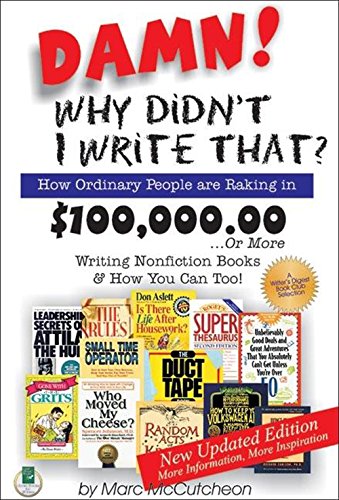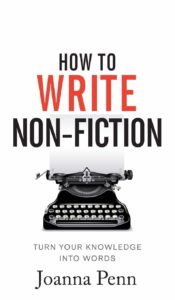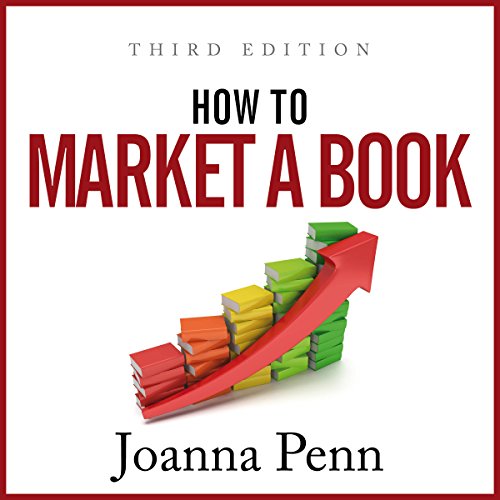Info eBook
An e-book, short for electronic book, is a digital publication intended to be read on electronic devices such as computers, smartphones, and e-readers. An informational e-book, also known as an “info-book,” is a type of e-book that is designed to provide readers with information on a specific topic or subject.

Info books can cover many topics, from self-help and personal development to business and finance, technology, and more. Experts can write them in a particular field or by individuals with personal experience and knowledge on a topic.
One of the main benefits of an info-book is that it can be easily accessed and read on various electronic devices. This makes it convenient for readers to access and consume the information at their own pace and from any location. Additionally, info books are often less expensive than traditional print books, making them more accessible to a wider audience.
Info books can be a valuable resource for anyone looking to learn more about a particular subject. They can provide detailed information and insights on a topic and can be a great way for readers to gain new knowledge and skills. Many info books include interactive features such as quizzes, activities, and exercises to help readers engage with the material and apply the information they have learned.
Another benefit of info books is that they can be easily updated and revised. Unlike traditional print books, info books can be updated with new information or corrected errors quickly and easily. This allows readers to access the most current information available on a topic.
The format of an info-book can vary depending on the topic and the author’s preference. Some info books are written in a narrative style, while others may be more technical or instructional in nature. Some info books include images, charts, and diagrams to help illustrate key points and make the information more accessible.
In conclusion, an info book is a digital publication that provides readers with information on a specific topic or subject. Experts can write them in a particular field or by individuals with personal experience and knowledge on a topic. They are convenient, accessible, and less expensive than traditional print books. They can be a valuable resource for anyone looking to learn more about a particular subject and can be easily updated and revised.
How to Structure an Info-Book

Since an informational book, also known as a nonfiction book, is a type of book that provides information on a specific topic or subject. The structure of an informational book is crucial in making the information accessible and easy to understand for the reader. In this guide, we will explore the different elements of an informational book and how to structure them effectively.
- Introduction: The introduction of an informational book is the first section the reader will encounter. It should provide an overview of the topic or subject that the book will cover, and it should be written in a way that is engaging and interesting to the reader. The introduction should also provide background information on the topic and explain why it is important or relevant.
- Chapter Structure: The body of an informational book is typically divided into chapters, each covering a specific aspect of the topic or subject. Each chapter should have a clear and concise title that accurately describes the content of the chapter. The chapters should be organized logically and coherently, with each chapter building on the information presented in the previous chapter.
- Subheadings and Paragraphs: The information should be broken down into smaller sections using subheadings within each chapter. These subheadings should be used to organize the information and make it easier for the reader to find specific information. Each subheading should be followed by a paragraph or two of information that provides more detail on the topic. The paragraphs should be written clearly and concisely, using simple language that is easy to understand.
- Illustrations and Images: Informational books can be enhanced by using illustrations and images. These can be used to provide visual examples of the presented information or to help break up the text and make the book more visually appealing. When using illustrations and images, it is important to make sure that they are relevant to the presented information and that they are of high quality.
- Conclusion: The conclusion of an informational book is the final section the reader will encounter. It should summarize the main points presented in the book and provide a final thought or observation on the topic. The conclusion should also provide suggestions for further reading or resources for the reader to explore.
- References and Sources: It is important to include a list of references and sources used in the book. This is important for the credibility of the author and readers who may want to explore the topic more in-depth.
In addition to the above elements, it is also important to consider the overall layout and design of the book. The book should be easy to read, with a clear and consistent font and layout throughout. Headings, subheadings, and bullet points can help break up the text and make the book more visually appealing.
In conclusion, the structure of an informational book is crucial in making the information accessible and easy to understand for the reader. By including an engaging introduction, organizing the information into logical chapters, using subheadings and paragraphs, incorporating illustrations and images, providing a clear conclusion, and including a list of references and sources, you can create an informational book that is both informative and enjoyable to read.
Marketing Info-books Strategies.

Here is a general overview of key strategies you can use to market and sell your info book effectively.
- Define your target audience: Before marketing your info book, it’s important to know your target audience. This will help you create a marketing strategy that speaks directly to the people most likely to buy your book.
- Utilize social media: Social media is a powerful tool that can help you reach a wide audience. Create social media profiles for your book and use them to share information about your book, including excerpts, reviews, and promotional offers.
- Build an email list: Email marketing is a great way to connect with your target audience and promote your book. Build an email list of potential buyers and use it to send them updates about your book, including release dates, promotions, and special offers.
- Optimize your website: Your website is your book’s online home, and it’s important to ensure that it’s optimized for search engines. Use keywords related to your book in your website’s content and meta tags to help it rank higher in search engine results.
- Network: Reach out to other authors, bloggers, and influencers in your niche and ask them to review your book or share information on their platforms. This can help you reach a wider audience and build credibility for your book.
- Create a book trailer: Create a short video trailer for your book, which you can use to promote on social media and your website. A book trailer can help to create buzz around your book and can be a great way to give potential buyers a taste of what it’s about.
- Leverage Amazon: Amazon is the world’s largest online bookstore, and it’s a great place to market and sell your info-book. Optimize your book’s listing on Amazon by including keywords, reviews, and a detailed description.
- Run a promotion: Running a promotion or offering a special deal on your info-book can help to generate interest and encourage sales. You can offer a discount on your book or run a giveaway to encourage people to buy it.
- Use podcasts and webinars: Podcasts and webinars are great ways to promote your book and connect with your target audience. Use them to share information about your book, answer questions, and engage with your audience.
- Measure and adjust your marketing efforts: Finally, tracking and adjusting them as needed is important. Use analytics tools to track your website’s traffic, social media engagement, and book sales. Use this information to adjust your marketing strategy and optimize your efforts for maximum results.
Marketing and selling info-books can be challenging, but by following these strategies and leveraging the power of the internet and social media, you can reach a wide audience and increase your chances of success.
Publishing Media for Info Products
There are many different publishing media available for creating and distributing information products. Some of the most popular include:
- E-books: These are digital books that can be read on various devices, including e-readers, tablets, and smartphones. E-books can be distributed through online retailers such as Amazon Kindle, Apple Books, and Google Play Books.
- Audiobooks: These are recordings of a book being read aloud. They can be distributed through online retailers such as Audible and iTunes, as well as through streaming services such as Spotify and Google Play Music.
- Podcasts: These are audio programs that can be downloaded and listened to on various devices. Podcasts can be distributed through platforms such as Apple Podcasts, Spotify, and Soundcloud.
- Video courses: These are video-based learning materials that can be distributed through online platforms such as Udemy, Coursera, and Khan Academy.
- Webinars: These are live or pre-recorded online presentations that can be distributed through platforms such as GoToWebinar and Zoom.
- Online membership sites: These websites provide access to exclusive content and resources for a monthly or annual fee. Examples include Thinkific, Teachable, and Skillshare.
- Print books: Traditional printed books can be distributed through physical retailers such as Barnes & Noble and Amazon and online retailers such as Amazon and Barnes & Noble.
- Coaching and consulting: Personalized one-on-one or group coaching and consulting services can be offered through various channels such as Skype, Zoom, or in person.
These are just a few examples of the many different publishing media available for creating and distributing information products. Other options include email courses, mobile apps, and print newsletters.
Profitability of Informational Media
The most profitable media format for informational products can vary depending on the type of product and target audience. However, a few formats tend to be more successful than others.
E-books are a popular format for informational products, as they are relatively easy to create and distribute. They can be sold on platforms such as Amazon Kindle Direct Publishing and Barnes & Noble Press, which have millions of potential customers. Additionally, e-books can be offered as a lead magnet to build an email list and then upsold to other products.
Online courses are another profitable format for informational products. Platforms such as Udemy and Coursera have made it easy for anyone to create and sell online courses, and the potential customer base is huge. Online courses also have the added benefit of including interactive elements, such as quizzes and assignments, which can increase engagement and retention.
Webinars are a great way to sell informational products, allowing real-time interaction with potential customers. This format can be used to provide a live demonstration of a product or service, answer questions, and offer special deals or discounts. They can be recorded and replayed later for those who missed them.
Membership sites can be a very profitable format for informational products. This format requires a bit more work to set up, but it can provide a steady stream of recurring revenue. Membership sites can offer exclusive content, community forums, and other perks that keep customers returning.
Finally, podcasts are becoming increasingly popular as a format for informational products. Podcasts can be a great way to reach a targeted audience and build a loyal following. They can be monetized through sponsored content, affiliate marketing, or by offering premium episodes or transcripts.
In conclusion, the most profitable media format for informational products will depend on the type of product and target audience. E-books, online courses, webinars, membership sites, and podcasts are all formats that can be successful. It is important to choose a format that aligns with the product and audience and promote it effectively.
